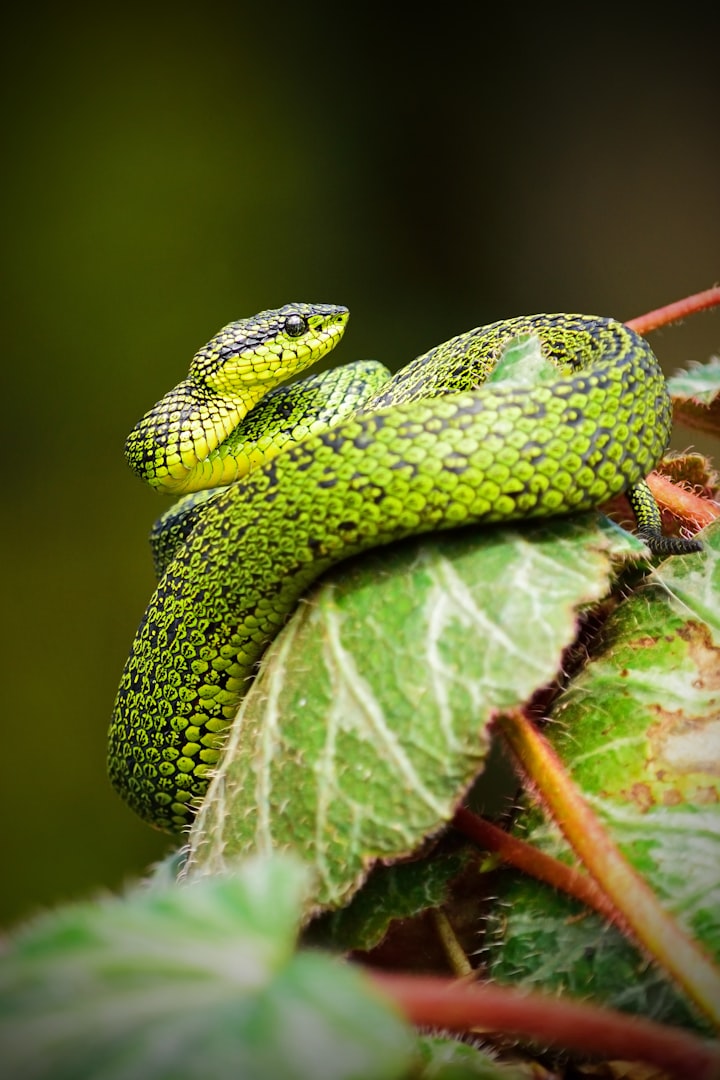
Snakes
Snakes: The Slithery and Mysterious Creatures
Snakes are fascinating creatures that have been around for millions of years. They are a diverse group of reptiles that come in many different shapes, sizes, and colors. From the venomous king cobra to the harmless garter snake, there are over 3,000 species of snakes in the world, with habitats ranging from deserts to rainforests.
Physical Characteristics
Snakes are elongated, legless reptiles that have a flexible body and smooth scales. They move by contracting and relaxing their muscles in a slithering motion, making them one of the most graceful and efficient creatures in the animal kingdom. They have a long, narrow head, with no external ears or eyelids. Instead, they have a transparent scale over their eyes, which helps them see and protect their eyes from debris.
Some snakes are venomous and have specialized fangs to inject venom into their prey. The venom can paralyze or kill their prey, making it easier for them to swallow. However, not all snakes are venomous, and many rely on their sharp teeth to catch and kill their prey.
Habitat and Behavior
Snakes can be found all over the world, from the deserts of Australia to the rainforests of South America. They can live in a variety of environments, from underground burrows to trees and water. Some snakes are terrestrial and spend most of their time on the ground, while others are arboreal and live in trees. Sea snakes are adapted to live in water and can dive up to 100 meters deep.
Snakes are also known for their ability to camouflage themselves, allowing them to blend in with their surroundings and avoid detection. This is especially useful for snakes that hunt by ambush, waiting for their prey to come within striking distance before attacking.
Despite their reputation as cold-blooded killers, most snakes are actually quite shy and prefer to avoid humans. They are typically non-aggressive and will only attack if they feel threatened or cornered. In fact, many species of snakes are beneficial to humans, as they help control rodent populations.
Reproduction and Lifecycle
Snakes reproduce through internal fertilization, where the male inserts his hemipenes (the male reproductive organ) into the female's cloaca. Depending on the species, the female may lay eggs or give birth to live young. Some species, such as the boa constrictor, give birth to a large number of live young at once, while others, like the king cobra, lay a smaller number of eggs.
Once born, baby snakes are fully independent and must fend for themselves from the moment they hatch. They are born with a complete set of teeth and are able to hunt and defend themselves right away.
Conservation Status
Unfortunately, many species of snakes are threatened by habitat loss and poaching. Snakes are often killed for their skin, which is used to make leather products, and for their meat, which is considered a delicacy in some cultures. Some species are also hunted for their venom, which is used in traditional medicine and as a weapon.
In addition to these threats, climate change is also affecting snake populations. As temperatures rise, snakes are being forced to move to higher elevations, where they may not have access to the resources they need to survive.
Conclusion
Snakes are fascinating creatures that play an important role in many ecosystems. Despite their fearsome reputation, most snakes are actually quite shy and avoid humans whenever possible. By learning more about these amazing reptiles and the threats they face, we can work to protect them and ensure their survival for generations to come.
Thank You for Read






Comments
There are no comments for this story
Be the first to respond and start the conversation.